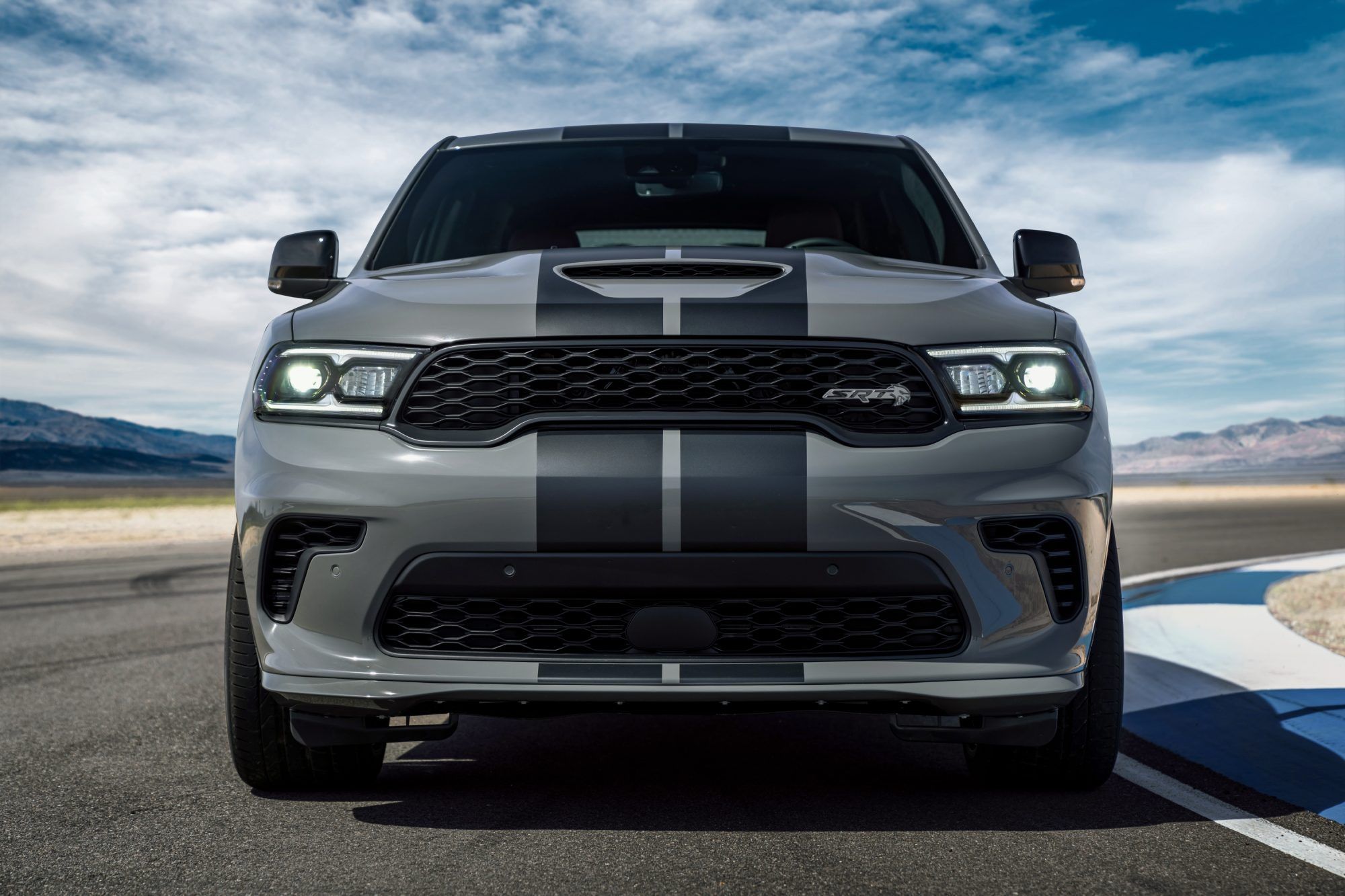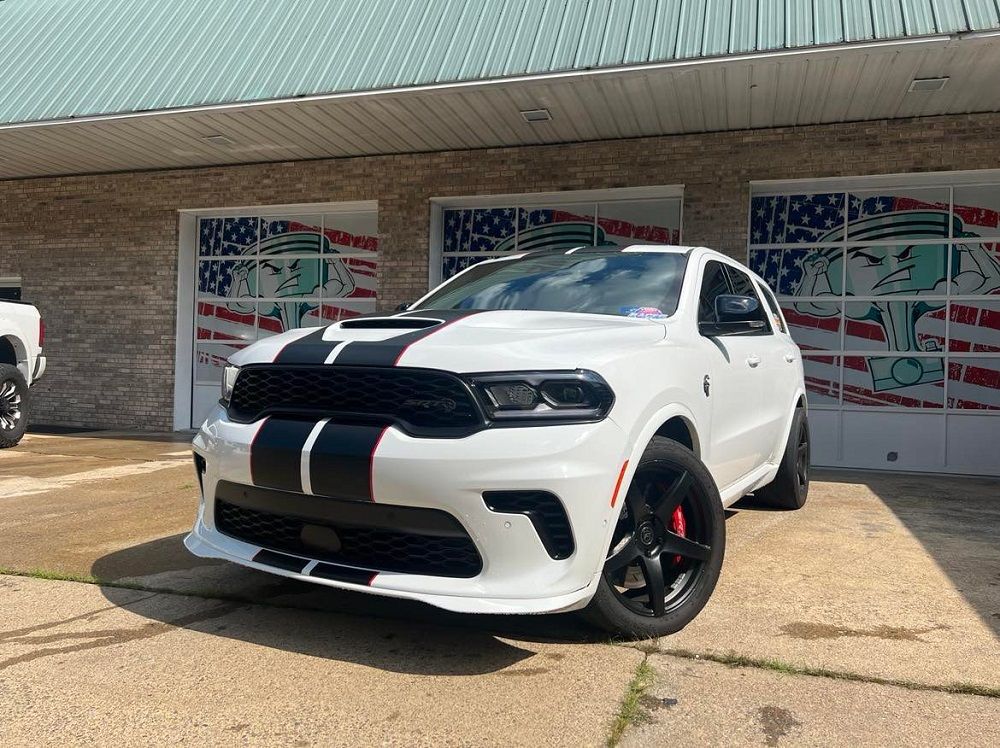It's left carrying the torch.
As the sun sets on the iconic Hellcat V8 era, a surprising hero emerges from the shadows to carry the blazing torch of supercharged Hemi power into the future. The legendary Challenger Hellcat, Charger Hellcat, and the monstrous Ram TRX are bidding their farewell, preparing to join the revered Jeep Grand Cherokee Trackhawk at the motorsports park in the sky. Yet, against all odds, a most unexpected contender stands firm - the 2024 Dodge Durango SRT Hellcat, now embarking on its third and possibly final chapter.
See both these Mopars race, only they're both highly modified here.
In a nostalgic journey back to 2021, Stellantis was swept up in the Hellcat frenzy, driven by the knowledge that the mighty 700-horsepower supercharged engine could find a snug home within the Durango's capable frame, shared with the WK2 Grand Cherokee Trackhawk (although the latter has since transitioned to the WL platform). Dodge, in a move that delighted fans and enthusiasts, answered their fervent prayers with a limited one-year production run of the Durango SRT Hellcat SUVs. Packing a jaw-dropping 710 horsepower and the prowess of all-wheel-drive, it swiftly earned its place as the ultimate family hauler, harmonizing the comforts of a BMW X5 M Competition with blistering speed. However, as the calendar turned to 2022, the Durango Hellcat seemingly vanished into obscurity - or so it appeared.

To the surprise of many, the Durango Hellcat made a triumphant return in 2023, as part of Dodge's "Never Lift" sprint toward the climax of V8 production. This decision, however, left existing owners in a state of perplexity. In March, Automotive News broke the story of a lawsuit filed by a group of 2021 Durango Hellcat drivers against Stellantis, the parent company of Dodge. Their grievance centered on the belief that they had paid a premium for their vehicles, and had they been aware of Dodge's intentions to extend production beyond the 2021 model year, they might have pondered their purchase decisions more carefully. Dodge had indeed employed a similar strategy before with the 807-horsepower Demon-inspired Challenger Super Stock, but it was a distinct model, unlike the Durango's continued journey. Nevertheless, is the extended production of Hellcat-powered vehicles truly a detriment?
As we embark on the realm of model year 2024, it's nothing short of remarkable to witness the Durango Hellcat's persistence, with no officially announced end-of-production date. It remains a formidable 710-horsepower powerhouse, capable of sprinting from zero to 60 mph in a claimed 3.5 seconds while accommodating three full rows of seats. It's the quintessential all-American performance SUV, a versatile juggernaut capable of towing, challenging muscle cars, and accommodating the entire family. Though it may not be entirely "all-American," given the Durango's shared heritage with the third-generation Mercedes-Benz ML, we can afford to overlook that minor detail, considering that German engineering once propelled us to the moon.

Curiously, the grand finale of the Hellcat engine may find its ultimate stage within an SUV, a remarkable departure from convention. Moreover, it's indeed unusual to witness the current-generation Durango enduring a thirteen-year run in a fiercely competitive three-row SUV market. Yet, the Hellcat engine complements the Durango impeccably, both serving as nostalgic relics from a bygone era. The era of supercharged V8 family vehicles may be dwindling into obscurity, but the Durango Hellcat refuses to fade silently into the night. For those who yearn for a ludicrously swift, undeniably capable, and irresistibly charismatic performance SUV, the time to seize the moment may be now, before this remarkable breed becomes an indelible chapter in the annals of automotive history.





